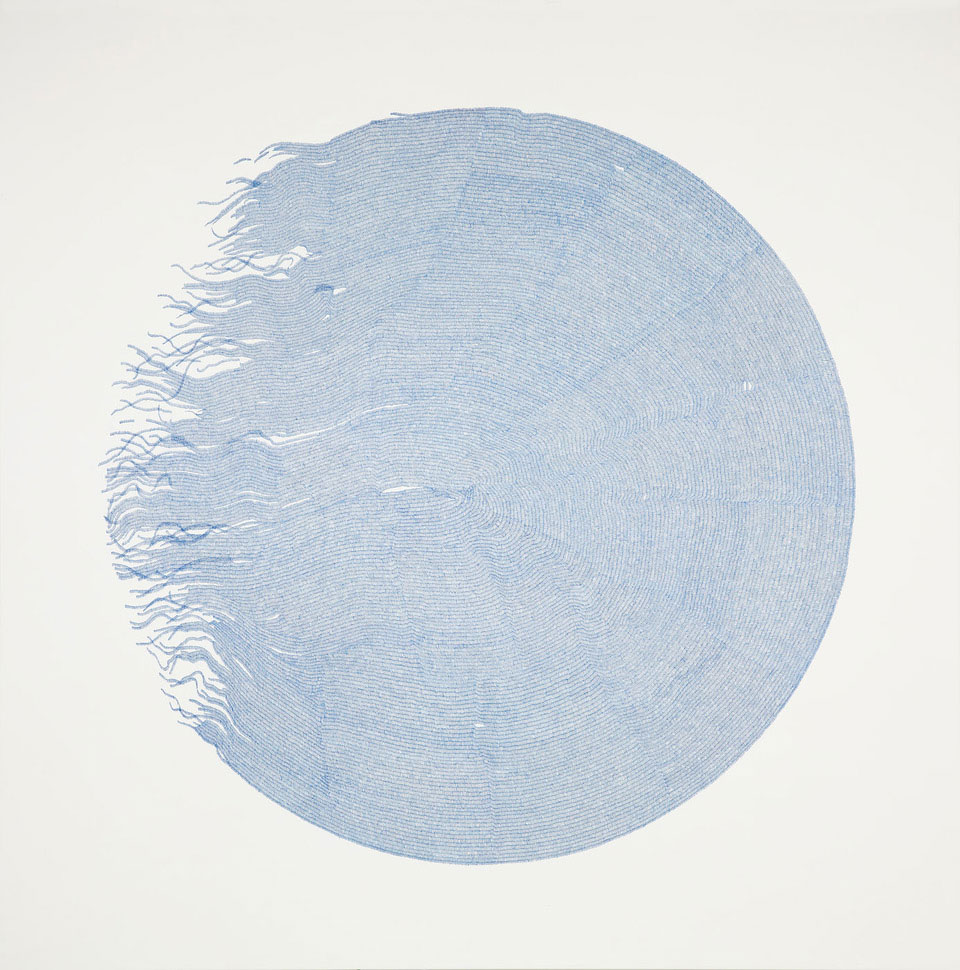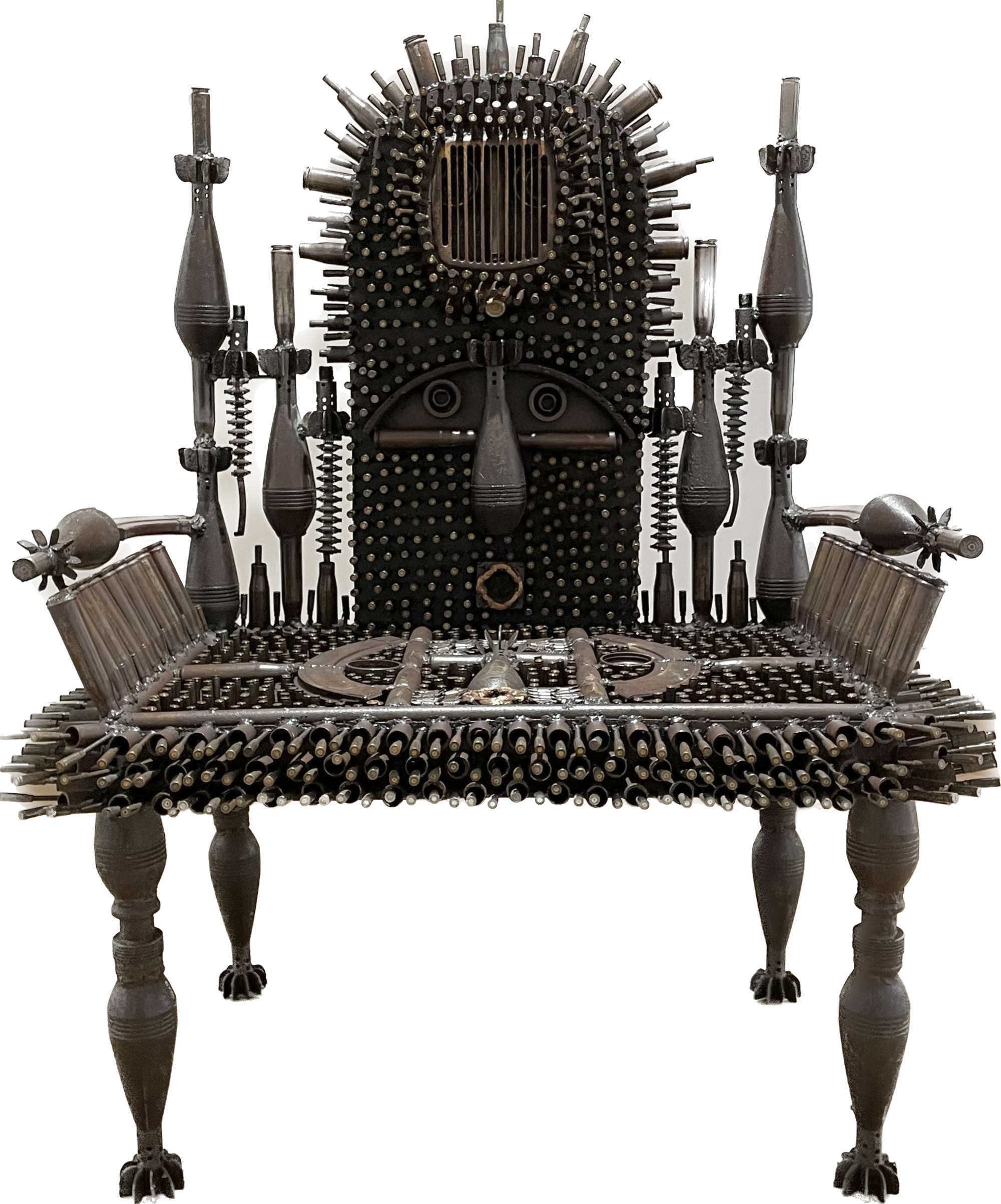The world of art fairs has had Dubai at its leading centre, as a representation for the global South and Middle East, alongside other mega successful fairs like India Art Fair, for years. It’s made its mark in the ever growing and maturing art market of the Middle East; luring art enthusiasts, aficionados, collectors, patrons, artists and students alike, to deep dive into what can only be labelled as an extensive and inclusive art affair annually.
The expansive fair is held under the patronage of His Highness Sheikh Mohammed bin Rashid Al Maktoum, the Vice President and Prime Minister of the UAE and Ruler of Dubai. For its 16 edition, Madinat Jumeirah, the home of Art Dubai, boasts 130+ participating galleries from 40+ countries, featuring close to about 600+ artists. This includes several returning and new galleries. In an attempt to reframe what an art fair can be, in addition to the carefully curated sections of the fair aside, there are special commissions, public art projects, talks, workshops and parallels that reaffirm Art Dubai’s status in the art world. Ranging from mediums and muses; diverse backgrounds to diverse range of voices and issues, from art that simply seeks indulgence to dialogue; there truly is something for all.
The contemporary section sees representation from an impressive set of galleries from across the globe. From cutting-edge artistic expressions discussing issues stemming from the current political scenarios from varied geographies, to individual experiences, histories etc; the contemporary section qualifies as a catalyst for conversations surrounding what’s important.
For anyone willing to look closely, works by Miryam Haddad, a Syrian artist who studied art in École des Beaux-Arts, Paris, offer a whirlwind of thrilling adventures. It’s the kind of work that engulfs the viewer into its all-encompassing madness and chaos; the kind one would want to wrap around themselves. With its neither abstract nor figurative quality, the work creates a vortex to pull the viewer in. Significant to note here that this seems to be Haddad’s first works to be displayed in the Middle East.
Image 1: Miryam Haddad “L’ode sans fin” 2022. Courtesy Art: Concept
Self-taught artist CB Hoyo’s works are humorous but analytical observations on the consumerist culture that engulfs the human mind today. His takes are witty, and offer satirical views on contemporary society. His artworks range from the artist’s prolific and reflexive network of allegories to the new bizarre normalcy we live in, which are refreshing to see and consume.
Image 2: CB Hoyo (Cuba, 1995) “OMG Im a trendsetter” 2023, Synthetic polymer paint water soluble oil pastels and water on raw canvas and linen. Courtesy Plan X
Image 3: CB Hoyo “Another Corny Generic Quote About Time” 2023, Water soluble oil pastels and water on raw canvas. Courtesy Plan X
“I save writing from its enslavement to sense”; Irma Blank is a German artist who moved to Sicily in the 1950s, in her early twenties. This confrontation with an unfamiliar language and culture instigated a sense of isolation, and thus began a journey of expression through the undecipherable – “writing purified of sense. A return to the zero point, the semantic zero, the semantic void: silence as a germinating source.”
The above is from the avant-testo series (since the end of 1990s), where gesture turns more chaotic and conclusive.
Image 4: Irma Blank “Ur-schrift ovvero Avant-testo A, 23-9-05” 2005, Ballpoint pen on polyester on wooden stretcher. Photo Carlo Favero. Courtesy of the artist and P420, Bologna
From the intended removal of sense to the return to the primordial ways of expression, comes the intended use of the minimal marks that feel like the orchestra of silence. These are works by Pakistan based artist Waqas Khan. Waqas deploys dots and dashes to large canvases and works with large scale minimalistic works. They tune into the drama of the spaces they occupy.
Image 5: Waqas Khan “Marine Algae” 2022. Ink on canvas. Photo Tamara Rametsteiner 2022. Courtesy of the artist and Galarie Krinzinger
Also, on display amongst the social critique, or the introspective, is the political and opinionated.
Image 6: Farid Abu Shakra “War is Over 1” 2020. Defamation drawing on duplex cardboard and red oil paint. Courtesy of the artist and Gallery One
Under the same roof as a meditative Waqas from Pakistan, or a Cuban CB Hoyo who pokes fun at society to an Irma, whose writing is devoid of sense to Palestinian Farid, whose display is conflicting and the complicated, is Bangladeshi artist Tayeba Begum Lipi, who works with themes of women and marginalisation.
Image 7: Tayeba Lipi Begum “The Italian Heels” 2018. Stainless Steel. Courtesy of the artist and Shrine Empire
Anti-war activist and Mozambican artist Gonçalo Mabunda’s almost totemic works can also be seen presenting their quintessential dichotomy of war and peace or beauty.
Image 8: Gonçalo Mabunda “Untitled” 2022. Decommissioned weapons and scrap metal. Courtesy AKKA Project
The modern section of the fair has been put together by Paris-based critic and curator Mouna Mekouar and Italian art historian Lorenzo Giusti, director of the GAMeC, Bergamo. With a special talks programme to accompany, this selection brings together 20th century artists from the Middle East and Africa. In the mix is Ghanaian artist and photographer James Barnor, represented by October Gallery. Labelled often as the first photojournalist of Ghana, Barnor’s work has been witness to Africa’s colonial liberation. He has shot everything from Ghana’s nascent independence to the neighbourhood fashion.
Image 9: James Barnor “Two Sisters in-law, Florence and Gifty” 1973/74. Digital fibre print. Courtesy October Gallery
Palestine-born artist Samir Salameh’s work which also comprises visuals depicting haunting familiar landscapes that takes from his experience of being displaced and struggles with occupation of spaces he called home.
Image 10: Samir Salameh “Ma’lula – Syria” 1968. Oil on Canvas. Courtesy Gallery One
Marwan, who was a popular Syrian artist whose oeuvre consisted of portraits that would be perceived by him (and would morph into) as landscapes can also be seen hanging proudly at the Meem Gallery Booth. The artist often referred to these portraits as “excavations” and the act as “painting souls”.
Image 11: Marwan “Kopf” Undated. Etching. Courtesy Meem Gallery
Trained as an engineer, Karachi-born London-based artist Rasheed Araeen is considered a pioneer of modernist minimalist sculpture – a highlight.
Image 12: Rasheed Araeen “YYBBRROO” 1972. Acrylic on wood. Courtesy of Aicon
The selection, in short, is testimony to the curatorial scholarship and art historical research that has backed this edition’s presentation of the modern at the fair.
The third section titled Bawaba, which translates to “Gateway” in Arabic, is curated by Bangkok-based Vipash Purichanont, and pulls together commissions specifically done for Art Dubai or made in the past year. There are 11 excellent solo presentations by 11 artists hailing from across the Global South.
Kenyan postwar and contemporary artist Dickens Otieno works with the discarded to create meaning and identity, his approach being that of the functional that’s also representative of something. Otieno started with painting but soon found metal from discarded cans to be the medium best suited to express his ideas. A son of a tailor, Dickens spent a lot of time growing up observing his mother in her workshop amongst lesos and kitenges, whose colours and patterns have greatly influenced his aesthetic.
His weaving process is informed by the weaving of natural materials like papyrus, raffia, or palm etc.
Akin to the practice and uniquely its own, while Dickens’ practice moves from absurd to meaning, Nepal based artist Youdhishthir Maharjan works from meaning to the absurd, both calling realities to the fore in their own ways.
Image 13: Dickens Otieno “Red Seal” 2023. Shredded aluminium and galvanised steel mesh. Courtesy of the artist, Circle Art Gallery and Art Dubai
Maharjan works around Buddhist and Hindu sensibilities where futile repetition of the act of endless cycles of rebirth and incarnation is equated to a journey that has no beginning nor an end. His signature style is to work only with books he finds at thrift stores, the discarded thus becoming central to the dictation of becomes. What follows is a painstaking process of minute repetition or reduction, retracing and retying. For the Art Dubai selection, the artist explores the themes of time and silence, working with books with titles like The Time in Between, Questions of Time, The End of the Beginning etc. Having found voice through the acts of cutting, erasing, painting, burning and weaving, Youdhisthir works with these not to understand and define time or silence, but to experience them through what he calls his “futile and absurd attempt of documenting time by repeatedly cutting and glueing one alphabet at a time.” What remains in place of meaningful arrangements of text is hollow memories of the familiar.
Image 14: Youdhisthir Maharjan “Between the lines” 2022. Hand embroidered book strips on reclaimed, deacidified book pages. Courtesy Blueprint12
Art Dubai DIGITAL which saw its successful launch in the previous edition, returns this year with an impressive second edition with digital programming and works in toe that collapse the traditional silos in which art is regularly put in. Art Dubai happens to be the first art fair to initiate a dedicated digital arts section. Represented are a colourful mix of virtual spaces, brick and mortar galleries, collectives, individual artists and Decentralised Autonomous Organisations (DAOs); the edition is curated by Singapore-based educator and writer Clara Che Wei Peh, and feature collaborations including Lian Foundation and 6529’s Open Metaverse project.
Image 15: Loris Cecchini “Digital Sculptures” 2022. Stainless steel, video, VR headset. Courtesy Gallery Continua
All of the explorations in tandem with many firsts also has Christie’s hosting its first regional Art+Tech Summit, which is a one-day conference, in partnership with the fair. Besides this, Chaupal: A Journey through South Asia covers a series of site-specific performances and activations by ten leading artists from South Asia that explore a variety of themes. The presentations at Madinat Jumeirah – Alserkal Avenue, Jameel Arts Centre and the Sharjah Biennale – also have an elaborate list of shows, and programmes that must not be missed!
Image 16: Installation view of Rana Begum “Dappled Light” at Alserkal Avenue. Photo Mohamed Somji/ Seeing Things. Courtesy of the artist, Alserkal Avenue, and The Third Line, Dubai
Image 17: Artist Rana Begum stands by Rana Begum “No. 1228 Mesh” at Concrete, 2023. Photo Mohamed Somji / Seeing Things. Courtesy of the artist and Alserkal Avenue
Art Dubai is on at Madinat Jumeirah from 1st – 5th of March, 2023.
About the writer: Priya Chauhan is a researcher, writer and an arts manager based in New Delhi.





















Thank you for this virtual tour of the fair!
Very informative article . Kudos ? to writer. Great job ?.